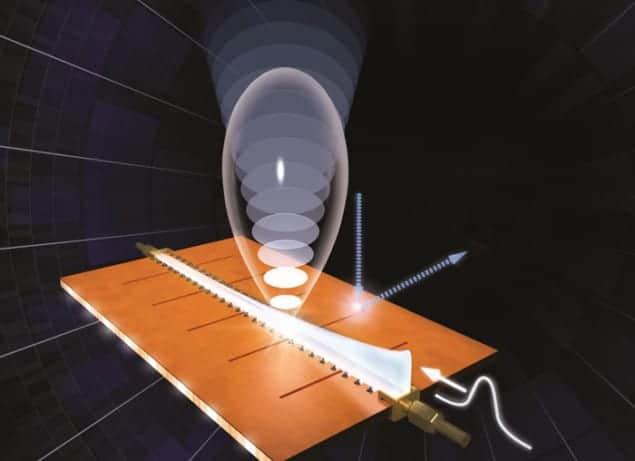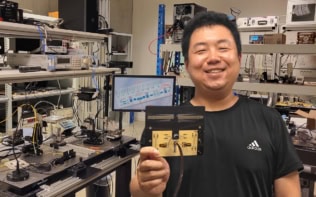
A new simpler, cheaper and potentially more effective way to prevent radio antennas from picking up unwanted signals has been created by researchers in the US. With further development, the technique could also be used to help prevent thermophotovoltaic cells from re-emitting radiation they absorb – according to the team.
The laws of electromagnetism work exactly the same way if you run time in the opposite direction. One logical consequence of this is that an antenna designed to broadcast at a certain radio frequency will also be very good at absorbing radiation at that frequency. This is problematic for broadcast radio antennas, which will absorb radiation that has bounced back from surrounding objects – something that can have a negative impact on their operation. While there are ways of minimizing the effect of these echoes, they can be expensive and reduce the performance of the antenna.
Now, Andrea Alù and colleagues at the University of Texas at Austin have developed a new way of dealing with echoes. Their design is based on a traditional leaky-wave antenna, in which electromagnetic waves of certain frequencies couple to the space around the antenna and “leak out” as they travel along it. They added a series of variable capacitors called varactors to the antenna circuit. The capacitance of a varactor varies with the voltage applied to it, and this is used to adjust the operational frequency of the antenna. The researchers added a second, lower-frequency wave sent down the same antenna. This second wave does not couple to the space around the antenna and is therefore not radiated. However, the wave modulates the voltage on the varactors and therefore alters the operational frequency of the antenna while it is transmitting.
Lower symmetry
The modulation caused by the second wave means that the antenna no longer has time-reversal symmetry. Waves emitted from the antenna are produced by waves travelling in the same direction as the modulation. However, if the antenna absorbs reflected signals coming back from the broadcast direction, this results in waves in the antenna travelling in the opposite direction to the modulation. This asymmetry between emission and absorption allows the antenna to be operated such that reflected waves do not couple efficiently back into the antenna.
“All antennas commonly used today are static,” explains Alù. “So they look the same for a signal that goes out in a certain direction and a signal that comes back from that direction. Our antenna does not look the same because there is this extra temporal modulation.” A similar effect could be achieved by physically shaking the antenna, says Alù, but shaking an antenna at 100 MHz is no simple matter. Nevertheless, the researchers are experimenting with using micro-electromechanical resonators, which could overcome some technical limitations of varactors.
Alù says that the researchers have filed a patent on their antenna and received commercial interest. “At this point, it becomes more of an engineering and development problem than a conceptual one,” he says. They are now looking at extending the concept to higher frequencies, where they believe it could be applied to, for example, thermophotovoltaics – energy-harvesting devices that convert infrared radiation to electricity. Here, designers face the opposite problem – how to create a device that absorbs infrared radiation without re-emitting it as the device warms up.
Important applications
George Eleftheriades of the University of Toronto describes the new antenna as “significant”, saying it “is compatible to standard integrated-circuit techniques and thus can eventually find important applications in telecommunications”. He says that implementation challenges could include “the handling of high powers during transmission, the need to operate over wide bandwidths or multiple frequencies and reducing losses on the voltage-controlled capacitors”. “I believe eventually people would overcome these issues as they are not fundamental,” he concludes.
The antenna is described in the Proceedings of the National Academy of Sciences.



